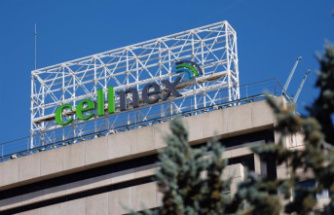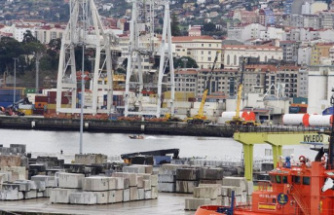Caption
Close
Juan O’Gorman, the revolutionary Mexican architect and painter who died in 1982, plays a prominent role in two recent books: Catherine Nixon Cooke’s “A Confluence of Civilizations,” the unraveling of the story behind the O’Gorman mural in Hemisfair Park, and Trinity University architectural historian Kathryn O’Rourke’s “Modern Architecture in Mexico City: History, Representation and the Shaping of a Capital.”
In an Express-News review late last year of “Confluence,” critic Ed Conroy wrote that the book “provides lessons in creativity and the appreciation of cultural differences that are especially relevant at this time.”
O’Rourke’s book builds on that idea.
In one sense, the 37-year-old scholar’s motivation for spending the last dozen years on the book project — indeed, the reason the Houstonian became a Mexico scholar in the first place — was to improve our outlook on our neighbor to the south.
“Mexico City has been important in this hemisphere longer than any other place — some 700 years,” she said during a recent interview in her Trinity office. “I would like for people on this side of the border to see that Mexico is not just about violence and drugs and pollution. It is a beautiful place with an incredibly rich culture and history.”
Modern Architecture in Mexico City: History, Representation and the Shaping of a Capital
By Kathryn E. O’Rourke
University of Pittsburgh Press, $49.95
O’Gorman, who designed a compound of two houses for his friends Diego Rivera and Frida Kahlo that is now a must-see stop on any tour of Mexico City, also built schools throughout the city, and in 1950 designed what O’Rourke calls “one of 20th-century Mexico’s most famous buildings.”
This was the Central Library at the National Autonomous University (UNAM), a huge campus planned and constructed on lava fields on the city’s outskirts.
O’Gorman’s contribution was the 14-story library, clad in a wondrous, multicolored mosaic on all sides telling the story of Mexico. San Antonio’s mural might be seen as a visual chapter in the UNAM library’s encyclopedia.
The UNAM campus, which O’Rourke calls “the most important architectural project in Mexico in the 20th century,” represents the underlying theme of “Modern Architecture in Mexico”: how the country’s distinctive modern architecture is built, sometimes literally, on the preColumbian temples and colonial palaces of its past.
But “Modern Architecture of Mexico City” by no means begins and ends with O’Gorman.
Architects both heralded and almost forgotten — Carlos Obregón Santacilia, Juan Segura, Alberto Arai, Luis Barragán — played key roles in Mexico City’s architectural development.
“They addressed local and international audiences and, over time, helped create one of the most complex systems of visual culture in the 20th century,” O’Rourke writes. “The book endeavors to deepen and widen the understanding of the intellectural and cultural contexts in which modernism arose in Mexico.”
Building on an already extensive historical record, O’Rourke makes connections between international architecture, archaeological excavation, photography, historical writing, national and local politics, social reform, industry, building techniques, fine art and folk art.
In what is perhaps a uniquely Mexican way, all these various forces came together at times in innovative buildings such as Obregón Santacilia’s Ministry of Health, the aforementioned Rivera/Kahlo house, the monkish Barragán residence and of course the UNAM campus.
While “Modern Architecture in Mexico City” is certainly not beach reading, it is “highly compelling,” according to New York University art historian Edward J. Sullivan, who adds that O’Rourke offers the reader “a unique insight into the monuments and personalities of this era. She brings this important time span to life in a most thought-provoking way.”
Rather than a dry textbook, “Modern Architecture in Mexico City” reads more like captivating historical journalism.
“A lot of my approach,” O’Rourke said, “came from spending a lot of time getting to know Mexico city — studying maps, walking the city, riding the subway — which I’ve been doing for more than 15 years. Mexico is a city of neighborhoods, of walking neighborhoods.”
O’Rourke said she tried to see the city as an architect would.
“I love architects and what they do, even though I can’t draw a straight line,” she said. “I have friends who are architects, and I’m impressed by how intensely visual they are, how they are able, years later, to remember the tiniest details of buildings.
“So, I started thinking about what it would be like to go walking around Mexico City in the 1920s, and you would have seen a lot of cool colonial buildings, you would have seen a lot of archaeological excavations, you would have known Diego Rivera’s murals and you would have seen the interest in folk art.”
When the tall, bald, bespectacled Barragán — Mexico’s only winner of architecture’s top award, the Pritzker Prize — was asked if there was a national Mexican architecture, a hotly debated subject for decades, he replied simply, “No.”
In the end, O’Rourke may leave readers with more questions than when we started. So, is there a Mexican national architecture?
“What I’m more interested in is why were they so worried about it?” O’Rourke said. “Because the first thought when you sit down to design a building is not politics. It’s how to solve the problems of the building in front of you.”
sbennett@express-news.net
Our editors found this article on this site using Google and regenerated it for our readers.













